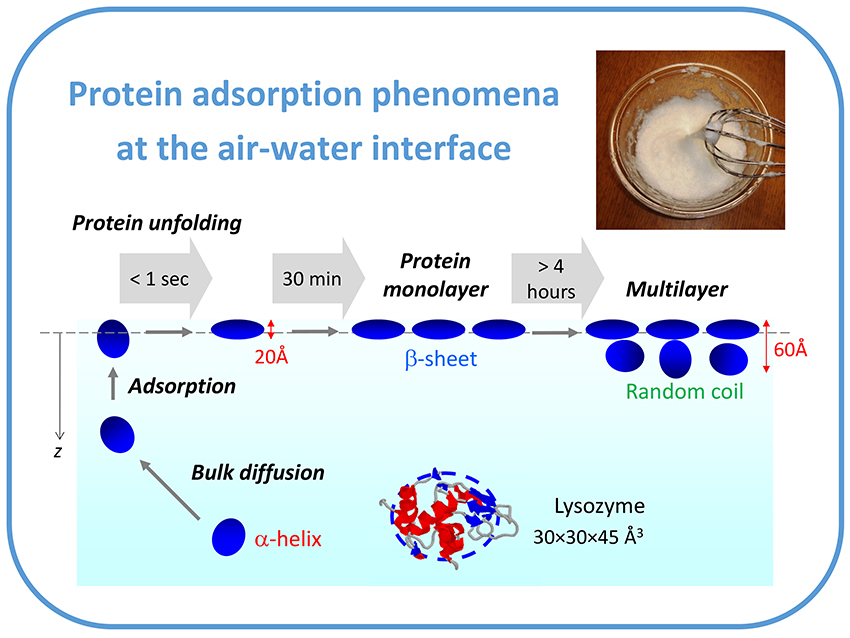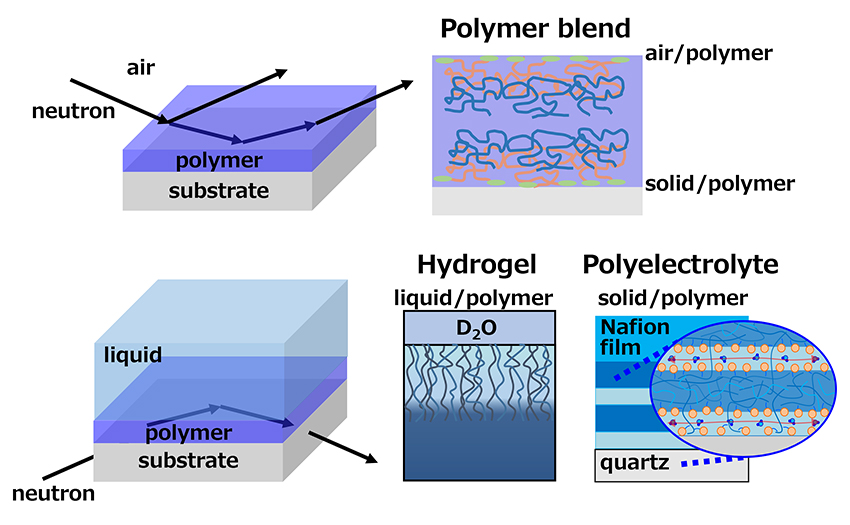
- |<
- <
- 1
- >
- >|
-
[in Japanese]2023Volume 23Issue 3 Pages 120
Published: 2023
Released on J-STAGE: March 08, 2023
JOURNAL FREE ACCESSDownload PDF (480K)
-
Yohko F. YANO2023Volume 23Issue 3 Pages 121-126
Published: 2023
Released on J-STAGE: March 08, 2023
JOURNAL FREE ACCESSSoft molecular thin films formed at liquid interfaces are useful research targets as model systems for elucidating the functions of emulsions and biological membranes. Grazing incidence X-ray reflection/diffraction measurement is one of the powerful experimental techniques for the structural study of soft interfaces. Synchrotron radiation, which is orders of magnitude stronger than X-rays in the laboratory, allows measurements to be made in a short time, enabling us to track structures that change over time. In this paper, we describe the dynamic structure measurement technique using synchrotron radiation and the mechanism of protein adsorption at the interface revealed by this method.
 graphical abstract Fullsize ImageView full abstractDownload PDF (1948K)
graphical abstract Fullsize ImageView full abstractDownload PDF (1948K) -
N. L. YAMADA2023Volume 23Issue 3 Pages 127-133
Published: 2023
Released on J-STAGE: March 08, 2023
JOURNAL FREE ACCESSNeutron reflectometry is a method to evaluate a depth profile of refraction index by analyzing interference of reflection, which can access a spatial range from a few nm to a few hundred nm. In this review, the principle of the neutron reflectometry is outlined first with an emphasis on the features of neutrons with the prospect of observation of surface excess layers. Next, some actual researches of the surface excess layers at air-liquid, solid-liquid, and liquid-liquid interfaces utilizing the neutron reflectometry are presented.
 graphical abstract Fullsize ImageView full abstractDownload PDF (1183K)
graphical abstract Fullsize ImageView full abstractDownload PDF (1183K) -
Yuji HIGAKI2023Volume 23Issue 3 Pages 135-141
Published: 2023
Released on J-STAGE: March 08, 2023
JOURNAL FREE ACCESSPolymer brush is a ubiquitous model for polymer interfaces. Charged polymer brushes exhibit unique interfacial characteristics in contrast to the non-charged counterpart due to electrostatic interactions while showing excellent dispersion stability, lubrication, and anti-fouling properties in aqueous environments. The hydrated-swollen state of charged polymer brushes is essential to address the molecular mechanism. Neutron reflectivity is a non-destructive quantitative method to figure out the hydrated-swollen state of polymer brushes as the vertical molecular chain density profile. In this review, we describe our neutron reflectivity studies on the hydrated-swollen state of polyelectrolyte brushes, zwitterionic polymer brushes, and polyelectrolyte brush/polyelectrolyte complex thin films, which is modulated by their molecular structure and interactions with electrolytes.
 graphical abstract Fullsize ImageView full abstractDownload PDF (5084K)
graphical abstract Fullsize ImageView full abstractDownload PDF (5084K) -
Daisuke KAWAGUCHI, Keiji TANAKA2023Volume 23Issue 3 Pages 143-151
Published: 2023
Released on J-STAGE: March 08, 2023
JOURNAL FREE ACCESSIn general, the energy state of substances at interfaces is different from that in the corresponding internal region. A better understanding of the aggregation states of polymer chains at the interfaces is crucial for designing the highly functional materials and devices composed of polymers. Neutron reflectivity is a powerful tool to examine the density distribution at the interfacial regions due to the superior spatial resolution. We here present examples for the aggregation states of polymers at the interfaces and the related physical properties and functions.
 graphical abstract Fullsize ImageView full abstractDownload PDF (3818K)
graphical abstract Fullsize ImageView full abstractDownload PDF (3818K)
-
Takuya Sugimoto, Motoyoshi Kobayashi2023Volume 23Issue 3 Pages 153-158
Published: 2023
Released on J-STAGE: March 08, 2023
JOURNAL FREE ACCESSDownload PDF (1421K)
- |<
- <
- 1
- >
- >|